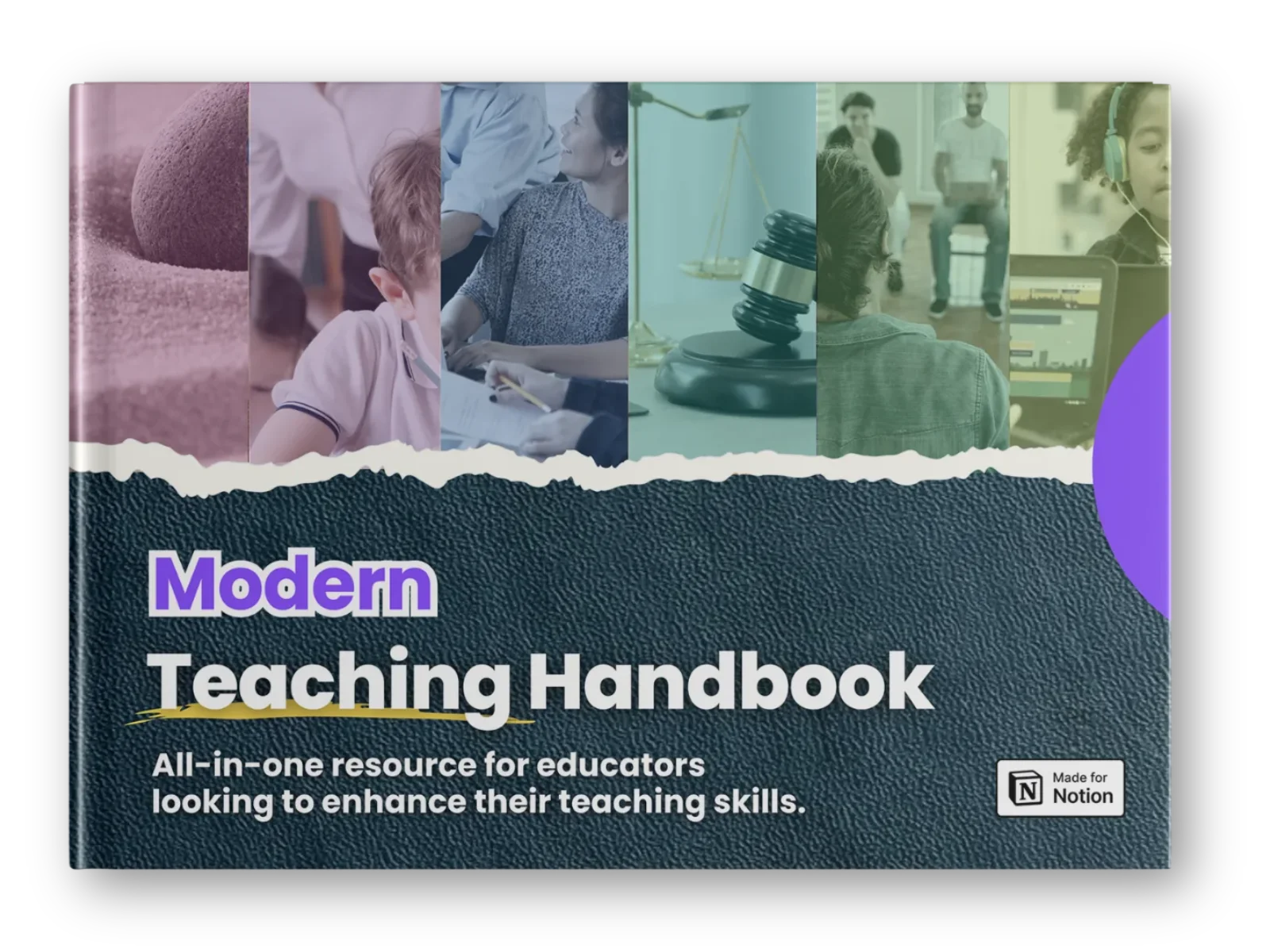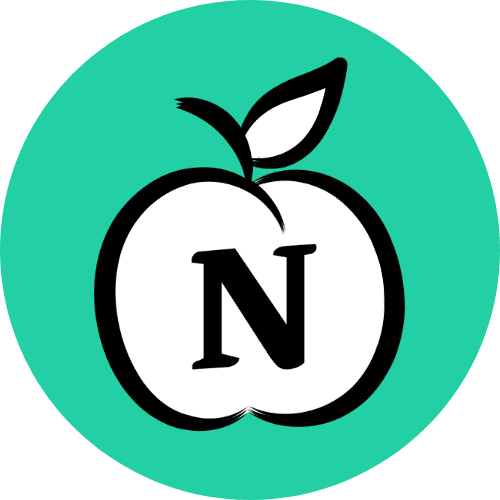Modern Teaching Handbook
Master modern education with the all-in-one resource for educators. Get your free copy now!



How Digital Tools Can Help with Practice Tests
How Digital Tools Can Help with Practice Tests
How Digital Tools Can Help with Practice Tests

Article by
Milo
ESL Content Coordinator & Educator
ESL Content Coordinator & Educator
All Posts
Digital tools are changing the game, offering strategic, more efficient study methods. Traditional practice tests rely on static questions, printed materials, and self-scoring, often making tracking progress and meeting individual needs difficult. Below, we explore how technology is reshaping how we practice and learn.
Digital tools are changing the game, offering strategic, more efficient study methods. Traditional practice tests rely on static questions, printed materials, and self-scoring, often making tracking progress and meeting individual needs difficult. Below, we explore how technology is reshaping how we practice and learn.
Modern Teaching Handbook
Master modern education with the all-in-one resource for educators. Get your free copy now!

Modern Teaching Handbook
Master modern education with the all-in-one resource for educators. Get your free copy now!

Modern Teaching Handbook
Master modern education with the all-in-one resource for educators. Get your free copy now!

What Makes Digital Practice Tests More Effective?
Digital tools for practice tests include websites that offer structured exam preparation, mobile apps with interactive quizzes, and AI-powered learning systems that adapt to user performance. These platforms change the approach to practice tests for the following reasons:

Specialized Platforms
Some digital for specific exams or fields of study. Unlike generic practice tests, these platforms focus on industry-specific knowledge, ensuring that students practice with questions that reflect the actual format, structure, and difficulty level of exams. For example, students trust PhlebotomyPracticeTest.net because it focuses on phlebotomy, offering relevant practice tests designed to match real exam formats.
Instant Feedback and Performance Tracking
Traditional tests often require manual grading, leaving students waiting for results before identifying mistakes. With digital tools, scoring is instant, allowing learners to see where they went wrong and why. Detailed explanations for correct and incorrect answers help reinforce understanding, helping students grasp complex concepts instead of memorizing answers.
Performance tracking helps students analyze their progress over time. Therefore, instead of guesswork, learners can see patterns in their mistakes and adjust their study strategies accordingly. Some tools even offer personalized recommendations, guiding students toward targeted practice sessions based on their past performance.
Accessibility and Convenience
Another advantage of digital practice tests is their accessibility. Unlike traditional paper-based tests that require printed materials and in-person supervision, online platforms allow students to practice anytime and anywhere.
Whether using a computer, tablet, or smartphone, learners can access test questions, track their progress, and review answers without physical resources. This flexibility removes logistical barriers, making test preparation more convenient and efficient.
Self-paced learning is another key benefit. Traditional practice tests often follow a fixed schedule, limiting when and how students can review material. Digital tools, on the other hand, let students set their own pace, allowing them to focus on areas where they need the most improvement.
Those with tight schedules—whether balancing school, work, or other commitments—can practice sessions whenever they have time. Many platforms also offer scheduling features and reminders.
Engaging and Interactive Learning Methods
Digital practice tests incorporate interactive features that enhance engagement, such as gamification. Features like leaderboards, achievement badges, and point systems encourage learners to stay consistent with their practice. They create a sense of accomplishment, making preparation less like a chore. Further, rewards and progress tracking reinforce positive study habits, helping students remain focused and committed to their goals.
Simulated test environments also play a crucial role in digital learning. Unlike paper-based tests, where students may struggle to replicate exam conditions, digital platforms offer timed assessments that mirror official exams. This practice reduces test-day anxiety by familiarizing students with time constraints and question patterns. Some platforms even introduce adaptive testing, where difficulty adjusts based on performance, mimicking standardized exams.
Resource Integration and Collaborative Learning
Digital practice test platforms extend beyond simple question-and-answer formats because they integrate additional learning resources. For instance, they can provide access to visual aids, interactive diagrams, video tutorials, and expert explanations that deepen understanding. Instead of relying solely on answer keys, students can review detailed breakdowns of complex concepts through instructional videos or written explanations.
This approach benefits different learning styles. Visual learners absorb information better through charts, animations, and highlighted key points, while auditory learners retain knowledge more effectively through spoken explanations or recorded lectures. Interactive problem-solving, such as drag-and-drop exercises or real-time simulations, engages kinesthetic learners by requiring active participation.
Some platforms also connect to official exam guides, ensuring the study materials align with current testing standards.
Collaboration is another key advantage. Many online platforms include peer discussion forums and study groups where students can interact, ask questions, and share insights. Engaging with others in a structured learning environment helps clarify topics and exposes students to different problem-solving approaches. Some platforms even allow learners to participate in group challenges or compare progress, fostering a sense of accountability and motivation.
Multi-Language Support for Global Learners
Many digital practice test platforms offer multi-language support, making exam preparation more inclusive for non-native speakers. Instead of struggling with complex terminology in an unfamiliar language, learners can switch to their preferred language for better comprehension.
Beyond simple translations, some platforms provide bilingual question explanations, allowing users to compare concepts in their native and target languages. It helps bridge gaps in understanding while reinforcing key terms and definitions. Advanced tools even integrate speech recognition and text-to-speech options, enabling auditory learners to hear questions and answers in their chosen language.
Conclusion
Digital tools have transformed how students approach practice tests, making exam preparation more efficient, engaging, and personalized. For instance, instant feedback, adaptive learning, and simulated test environments help learners focus on their weaknesses while improving their test-taking skills.
Further, the accessibility of online platforms allows for self-paced study and the freedom to collaborate with other learners.
What Makes Digital Practice Tests More Effective?
Digital tools for practice tests include websites that offer structured exam preparation, mobile apps with interactive quizzes, and AI-powered learning systems that adapt to user performance. These platforms change the approach to practice tests for the following reasons:

Specialized Platforms
Some digital for specific exams or fields of study. Unlike generic practice tests, these platforms focus on industry-specific knowledge, ensuring that students practice with questions that reflect the actual format, structure, and difficulty level of exams. For example, students trust PhlebotomyPracticeTest.net because it focuses on phlebotomy, offering relevant practice tests designed to match real exam formats.
Instant Feedback and Performance Tracking
Traditional tests often require manual grading, leaving students waiting for results before identifying mistakes. With digital tools, scoring is instant, allowing learners to see where they went wrong and why. Detailed explanations for correct and incorrect answers help reinforce understanding, helping students grasp complex concepts instead of memorizing answers.
Performance tracking helps students analyze their progress over time. Therefore, instead of guesswork, learners can see patterns in their mistakes and adjust their study strategies accordingly. Some tools even offer personalized recommendations, guiding students toward targeted practice sessions based on their past performance.
Accessibility and Convenience
Another advantage of digital practice tests is their accessibility. Unlike traditional paper-based tests that require printed materials and in-person supervision, online platforms allow students to practice anytime and anywhere.
Whether using a computer, tablet, or smartphone, learners can access test questions, track their progress, and review answers without physical resources. This flexibility removes logistical barriers, making test preparation more convenient and efficient.
Self-paced learning is another key benefit. Traditional practice tests often follow a fixed schedule, limiting when and how students can review material. Digital tools, on the other hand, let students set their own pace, allowing them to focus on areas where they need the most improvement.
Those with tight schedules—whether balancing school, work, or other commitments—can practice sessions whenever they have time. Many platforms also offer scheduling features and reminders.
Engaging and Interactive Learning Methods
Digital practice tests incorporate interactive features that enhance engagement, such as gamification. Features like leaderboards, achievement badges, and point systems encourage learners to stay consistent with their practice. They create a sense of accomplishment, making preparation less like a chore. Further, rewards and progress tracking reinforce positive study habits, helping students remain focused and committed to their goals.
Simulated test environments also play a crucial role in digital learning. Unlike paper-based tests, where students may struggle to replicate exam conditions, digital platforms offer timed assessments that mirror official exams. This practice reduces test-day anxiety by familiarizing students with time constraints and question patterns. Some platforms even introduce adaptive testing, where difficulty adjusts based on performance, mimicking standardized exams.
Resource Integration and Collaborative Learning
Digital practice test platforms extend beyond simple question-and-answer formats because they integrate additional learning resources. For instance, they can provide access to visual aids, interactive diagrams, video tutorials, and expert explanations that deepen understanding. Instead of relying solely on answer keys, students can review detailed breakdowns of complex concepts through instructional videos or written explanations.
This approach benefits different learning styles. Visual learners absorb information better through charts, animations, and highlighted key points, while auditory learners retain knowledge more effectively through spoken explanations or recorded lectures. Interactive problem-solving, such as drag-and-drop exercises or real-time simulations, engages kinesthetic learners by requiring active participation.
Some platforms also connect to official exam guides, ensuring the study materials align with current testing standards.
Collaboration is another key advantage. Many online platforms include peer discussion forums and study groups where students can interact, ask questions, and share insights. Engaging with others in a structured learning environment helps clarify topics and exposes students to different problem-solving approaches. Some platforms even allow learners to participate in group challenges or compare progress, fostering a sense of accountability and motivation.
Multi-Language Support for Global Learners
Many digital practice test platforms offer multi-language support, making exam preparation more inclusive for non-native speakers. Instead of struggling with complex terminology in an unfamiliar language, learners can switch to their preferred language for better comprehension.
Beyond simple translations, some platforms provide bilingual question explanations, allowing users to compare concepts in their native and target languages. It helps bridge gaps in understanding while reinforcing key terms and definitions. Advanced tools even integrate speech recognition and text-to-speech options, enabling auditory learners to hear questions and answers in their chosen language.
Conclusion
Digital tools have transformed how students approach practice tests, making exam preparation more efficient, engaging, and personalized. For instance, instant feedback, adaptive learning, and simulated test environments help learners focus on their weaknesses while improving their test-taking skills.
Further, the accessibility of online platforms allows for self-paced study and the freedom to collaborate with other learners.
Modern Teaching Handbook
Master modern education with the all-in-one resource for educators. Get your free copy now!

Modern Teaching Handbook
Master modern education with the all-in-one resource for educators. Get your free copy now!

Modern Teaching Handbook
Master modern education with the all-in-one resource for educators. Get your free copy now!

Table of Contents
Modern Teaching Handbook
Master modern education with the all-in-one resource for educators. Get your free copy now!
2024 Notion4Teachers. All Rights Reserved.
2024 Notion4Teachers. All Rights Reserved.
2024 Notion4Teachers. All Rights Reserved.
2024 Notion4Teachers. All Rights Reserved.






